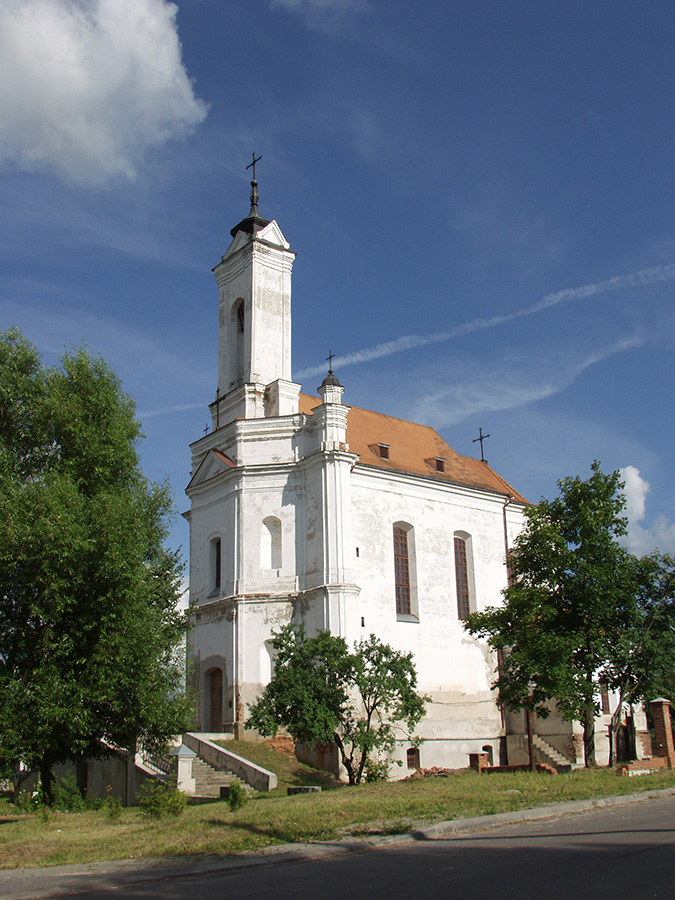The stone Church of the Nativity of the Blessed Virgin Mary was built at the expense of Anthony Tadeusz Przezdetsky (1718-1772), the owner of the Zaslavsky county. The construction of the main mass of the church took place between 1760, when Anthony completed the property affairs for the acquisition of the county, and 1772, when the magnate died in Warsaw.
It follows from his will that as of 1772, the construction work in the church was not yet completed. Anthony entrusted the duties of completing them to his sons-Michael and Dominic. There is a version that the decoration of the temple was supervised by the Italian architect Carlo Spampani, hired by the Przezdetsky for the service. To work in the Zaslavsky Church, he invited famous artists in the Polish-Lithuanian Commonwealth: the sculptor Karol Yelsky and the painter Antony Smuglevich.
The church is a single-nave structure with an elongated apse of the presbytery. On the sides of the temple are two sacristy. The dominant architectural and figurative composition of the church, attributed by art historians to a number of valuable monuments of the late Baroque, is the main (western) facade, which is characterized by a flexible deep-spatial structure.
The role of the sacred center of the interior was performed by three altars. The main one was made of stone, decorated with stucco decoration, there was an image of the Blessed Virgin Mary in it. The side altars, wooden, decorated with carvings, complemented the main shrine with images of the crucified Christ and St. Anthony.
After the suppression of the uprising of 1863-1864, the church was transferred to the Orthodox Church and consecrated in honor of the Nativity of the Most Holy Theotokos (1868). Soon after that, the church structure underwent a significant reconstruction in the Byzantine-Russian style. So the central part of the main facade began to end with a small four-sided bell tower, and a large dome on a light drum was erected over the nave.
In the 1920s, the Church of the Nativity of the Most Holy Theotokos was examined by specialists of the Institute of Belarusian Culture, and in 1926, by the decree of the SNK of the BSSR, it was taken under state protection and acquired the status of an architectural monument.
The Church of the Nativity of the Most Holy Theotokos existed until 1944, when as a result of the fighting, the temple building was seriously damaged – only the walls remained. Since the late 1980s, restoration work has been carried out in the former Zaslavsky Parafial Church. In 2003, the church was returned to Catholics.
